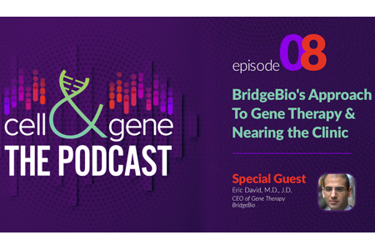Inside Canavan Disease With BridgeBio's Dr. Eric David

By Erin Harris, Editor-In-Chief, Cell & Gene
Follow Me On Twitter @ErinHarris_1

Canavan disease is rare genetic neurological disorder characterized by the spongy degeneration of the white matter in the brain. Affected infants may appear normal at birth, but usually develop symptoms between 3-6 months of age. According to National Organization for Rare Diseases (NORD), most affected children develop life-threatening complications by 10 years of age. Canavan disease occurs because of mutations in the aspartoacylase (ASPA) gene that affects the breakdown (metabolism) of the N-acetylaspartic acid (NNA). It is inherited as an autosomal recessive condition.
On Cell & Gene: The Podcast, I had the opportunity to talk to Dr. Eric David, CEO of Gene Therapies at BridgeBio about the company’s gene therapy programs for Canavan disease. Dr. David explains that he and his team talk to Canavan families monthly to determine what success looks like to the patient and the patients’ families, as they have a partnership with families. For example, families share that they want to reduce the patient’s spasticity or obtain the ability to maintain eye contact or hold their head up.
Dr. David explains that BridgeBio addressing unmet needs for Canavan disease comes down to putting patients first and letting sophisticated science do its job. He explains that when developing a therapy, the company goes to where the unmet need is and where great science is being done in research labs. When they find programs that have true unmet need, sometimes there is no other option than to replace the gene. As such, there is no other way to meet the need of Canavan disease outside of gene therapy. For Canavan disease, BridgeBio conducted a study to show which route of administration would be best. He explains that the deep cortical white matter is deep in the brain and that’s the part of the brain that needs to be treated. And a direct and easy route does not exist. They compared all different routes of administration, and that’s how they settled on IV administration.
Dr. David also touches on manufacturing challenges and plans for Canavan disease as well as their investigational AAV gene therapy to treat congenital adrenal hyperplasia.
There are more podcast episodes just like this one that detail the challenges and wins in cell and gene therapy. Be sure to subscribe to Cell & Gene: The Podcast so you never miss an episode.
